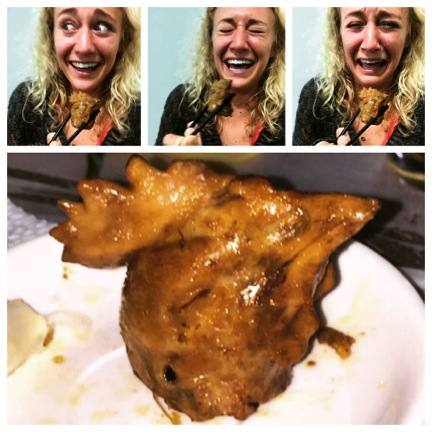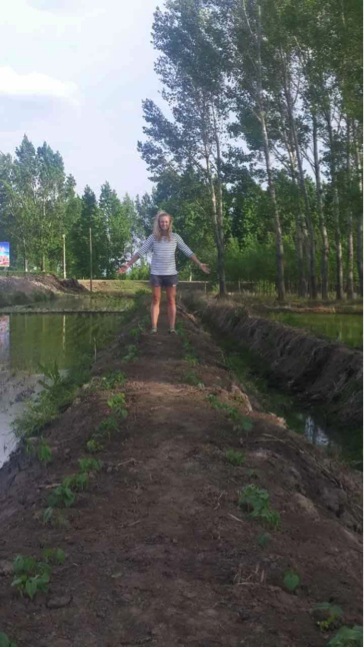Ethics vs. Efficiency
Add Summary

Aug. 2, 2016
Anna Herzberger is an MSU Center for Systems Integration and Sustainability doctoral student doing research in the Heilongjiang Province in northeastern China. She hails from the farmlands of Virginia, Ill.
As we drive through the rural Chinese country side visiting village after village, I notice a pattern within Chinese agriculture that is paralleled in Chinese culture, and that is quite different from anything I’ve experienced in America.
They literally use everything -- and between rice paddies are planted to soy and the medians between roads with corn. The roadside ditches are lined with small, neat rows and fields even exist around the graves in cemeteries. If we were lucky enough to find a small stand of trees, the understory was completely cleared, used to graze cattle, ducks or sheep from every parcel of available land to every part of the chicken. The strips of land between rice paddies are planted to soy and the medians between roads with corn, the roadside ditches are lined with small, neat rows and fields even exist around the graves in cemeteries. If we were lucky enough to find a small stand of trees, the understory was completely cleared, used to graze cattle, ducks or sheep.
At meals things that would have been discarded in the U.S. made regular appearances and were often stars of the meal. For example, fish eyeballs and brains are usually plucked first from the dish. I actually have a really hard time eating the fish in China because they are filled with small bones that I never learned how to spit out. However, my hosts were aware of this always taking care to remind me to be careful. I imagine several Americans have nearly died from choking on fish bones because this is so common. Chicken feet and heads, which at first made me squirm, were ordered regularly as well as stomach and intestine, which still make me squirm.
really hard time eating the fish in China because they are filled with small bones that I never learned how to spit out. However, my hosts were aware of this always taking care to remind me to be careful. I imagine several Americans have nearly died from choking on fish bones because this is so common. Chicken feet and heads, which at first made me squirm, were ordered regularly as well as stomach and intestine, which still make me squirm.
One of my favorite dishes is pork bone and potato soup. This doesn’t mean there is a bone in your pork but rather you suck what meat is left on the bone after the primary cuts have been striped away. I was told this dish, and many others like it, were invented out of necessity when China’s historic elite would claim the big chunks of meat, leaving only the bones for the peasants. Possibly the most shocking to my American eyes is the consumption of dog and yes… I tried it.
Both in the way they farm and the way they eat, the Chinese make sure to use as much of the resource as possible. This most likely stems from the current and historic situation of having a large population with limited resources. Even the standard Chinese greeting is eerily reminiscence of times when there wasn’t enough food. “Ni chi fan ma?” is a common way to ask “how are you?” but directly translates to “have you eaten?” It is not hard to understand how phrases like these became commonplace in China when more than 45 million people starved to death during the Great Leap Forward (1958-62).
Furthermore, in the U.S. we have ample land -- for each square kilometer in the U.S. there are 35 people, but in China each square kilometer must support 145 people (World Bank). Said another way, in the U.S. there are 0.49 arable (farm-able) hectares per person while in China there 0.08 are arable hectares per person (World Bank). From this it isn’t hard to see why it is necessary to be as efficient as possible with their resources, ensuring there is enough resources to go around, which is arguably more ethical than abstaining consumption of our furry companions.
(World Bank). From this it isn’t hard to see why it is necessary to be as efficient as possible with their resources, ensuring there is enough resources to go around, which is arguably more ethical than abstaining consumption of our furry companions.



 Print
Print Email
Email





